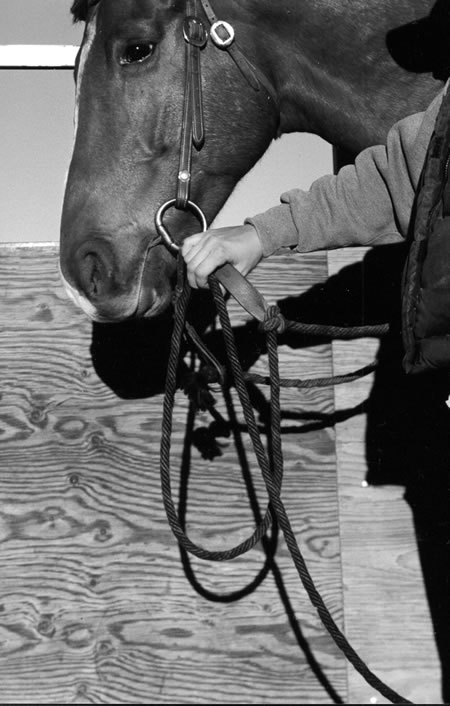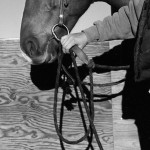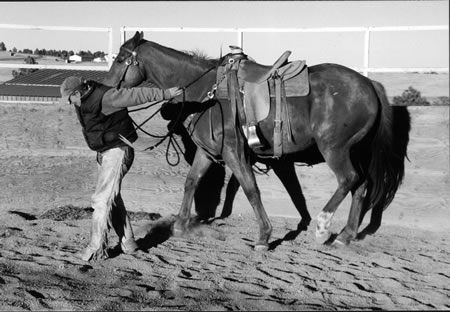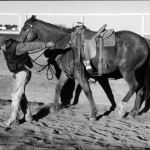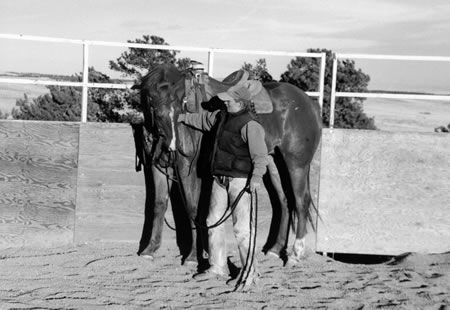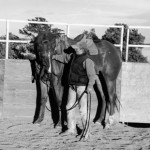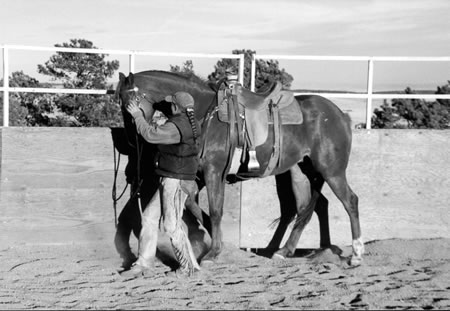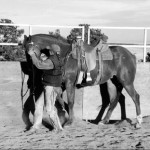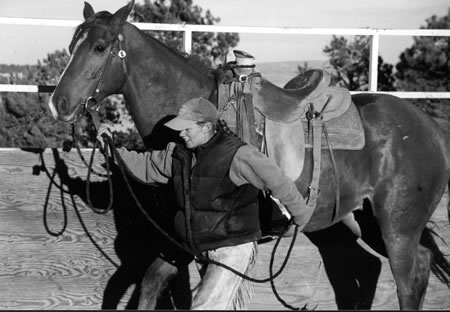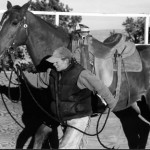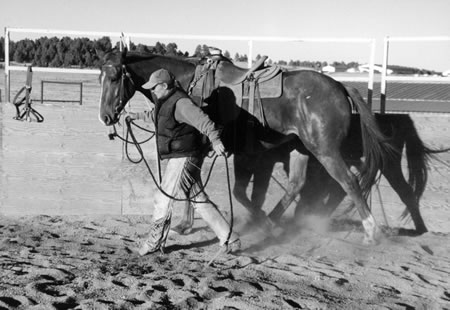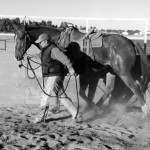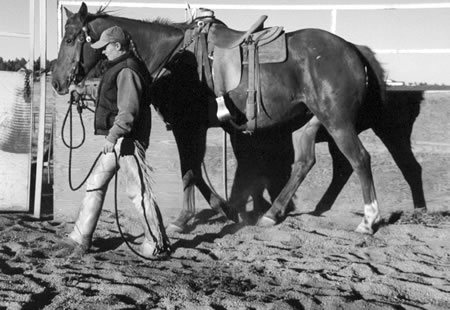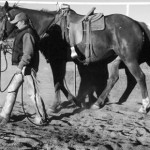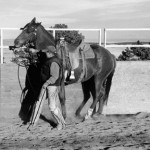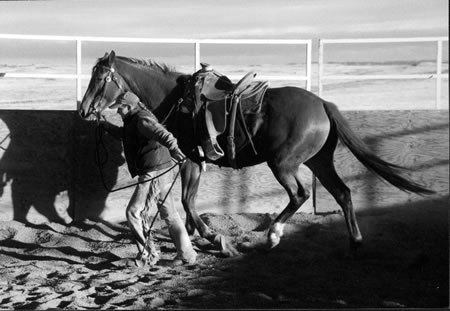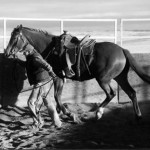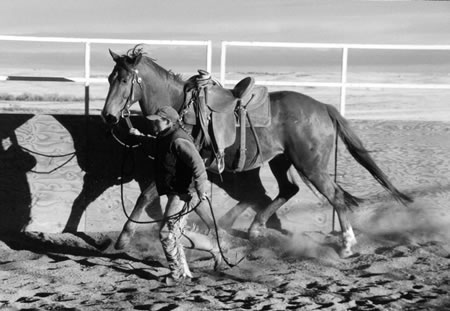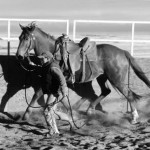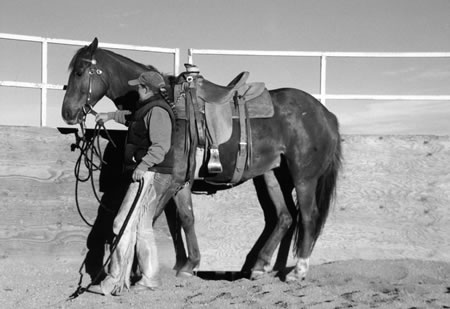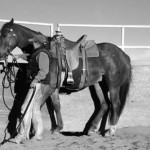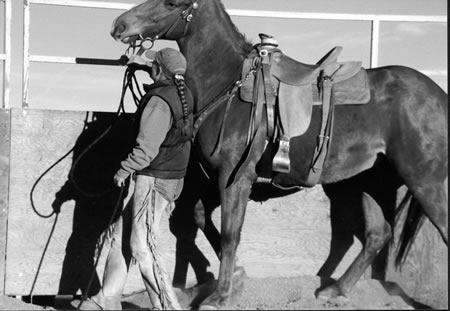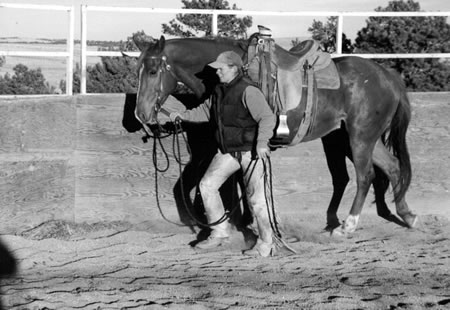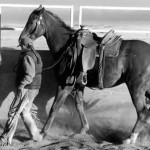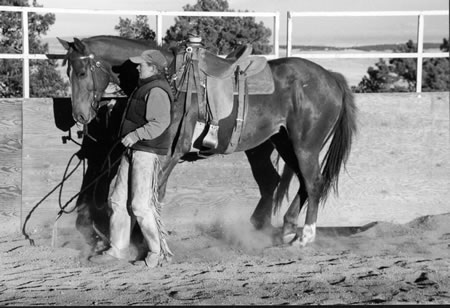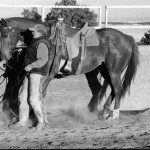With Mindy Bower
Transitions on Ground Help Transitions Under Saddle
This exercise is all about getting to your horse’s feet before you get on. There are many groundwork exercises that free up different parts of your horse. This exercise is a sort of “extra credit” thing to do with your colt or older saddle horse before you get on. If you get him good at practicing transi- tions on the ground he, will be a lot more prepared once you get on him. If you cannot get to his feet on the ground, you don’t stand much of a chance from his back.
You are going to be making transitions, first simple then more precise, from walk, to halt to back. You will face forward, your hand nearest to your horse on the slobber strap, your forearm parallel to the ground. Your outside hand holds the tail of your mecate rope. If you are working with a colt who is not yet wearing a snaffle, you can use your halter and lead rope for this exercise as well.
Practicing next to a fence will keep your horse from drift- ing away from you. You will start from a halt, and ask your horse to strike off into a walk. When you first ask, if he does- n’t follow that feel and you have to follow up by driving him with your mecate, he might take a big jump forward because he is surprised. Try to go forward with him and not discourage any forward motion. You will work on getting him to stay right with you when you move on to stopping and backing. You will then stop, and then immediately ask him to back.
At first he might try to turn his head in toward you and get crooked rather than move his feet. Just reach up with your outside hand and block that eye from coming toward you.
When the walk, stop, and back feel light as a feather, you can advance to working on transitions within the walk, asking him to speed up the walk and to slow it down. In the slow walk you can work on asking him to flex and get soft at the poll. Basically, you will be asking for a soft feel on the ground. You can also move from the walk up to the trot and then back to the walk again. What you are looking for is for your horse to stay straight from nose to tail and that you can make transitions with prop- er flexion in your horse’s poll, and that there is no resistance at all in his feet. He responds to the quality of the tension you place on the slobber strap, forward or back, and responds appropriately. By the time I’m finished, I want my hand to be sort of open on the rein because my horse is so light.
Practice your transitions on both the right and left sides of your horse. Switch your leading and driving hands when you changes sides.
This article originally appeared in Eclectic Horseman Issue No.3


